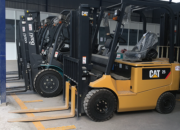Choose between electric forklifts or diesel forklifts
Compare and choose electric forklifts and diesel forklifts
Each type of forklift will be used in a different environment. Choosing the right type can improve warehouse operations and reduce accidents. Otherwise, it will affect the performance improvement and accident rate. In fact, both electric forklifts and diesel forklifts have their own advantages and disadvantages.
Let’s talk about diesel forklifts first:
Advantages of diesel forklift trucks: Diesel engines have the characteristics of large capacity and can adapt to a variety of working environments, including in some harsh environments. In addition, the fuel delivery is always quick.
Disadvantages of diesel forklift trucks: Diesel engines are relatively noisy and emit large pollutant emissions. The engine needs regular maintenance, if it fails, it will be more troublesome, if it is operated indoors, it will affect the air quality in the car. Structurally, the vehicle will be larger to accommodate the engine, less maneuverable, and require more space to turn around, which is not possible in a small space.
for electric forklift
Advantages of electric forklifts: When working, electric forklifts do not emit polluting emissions, the engine runs relatively smoothly. Maintenance is convenient, maintenance is relatively simple and convenient. When working, it can be used indoors or in small spaces. Loading and unloading is also simpler than a diesel forklift, in general the vehicle can be operated flexibly, the width is from 2.7 meters to 2.9 meters.
Disadvantages of electric forklifts: the maximum capacity is usually smaller than that of diesel forklifts, need to disconnect and charge when the power is out, the time to fully charge is long, 10-14 hours. Basically use it up during the day and charge it up at night. If you forget to charge one day, you have to stop working to charge the next day. Battery life is also a concern unless a backup battery is available.
However, the maintenance cycle of electric forklift engines is much longer than that of diesel forklifts. There is also much less maintenance per maintenance compared to diesel forklifts, resulting in significant savings in time and labor costs. In a nutshell, electric forklifts have less downtime than diesel forklifts. In some electronics factories and other manufacturers that do not have high-quality goods and need a relatively clean environment, electric forklifts are the first choice.







